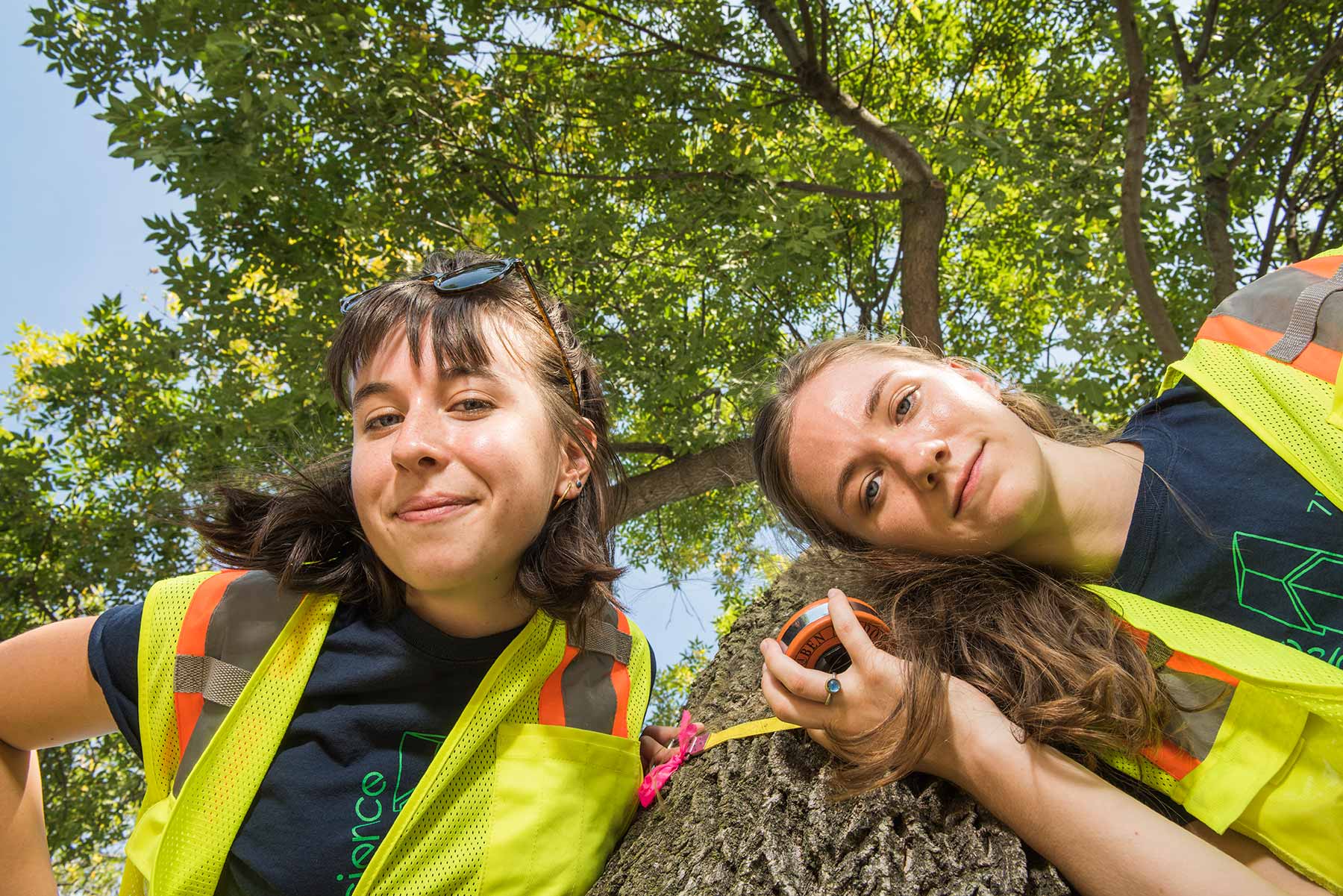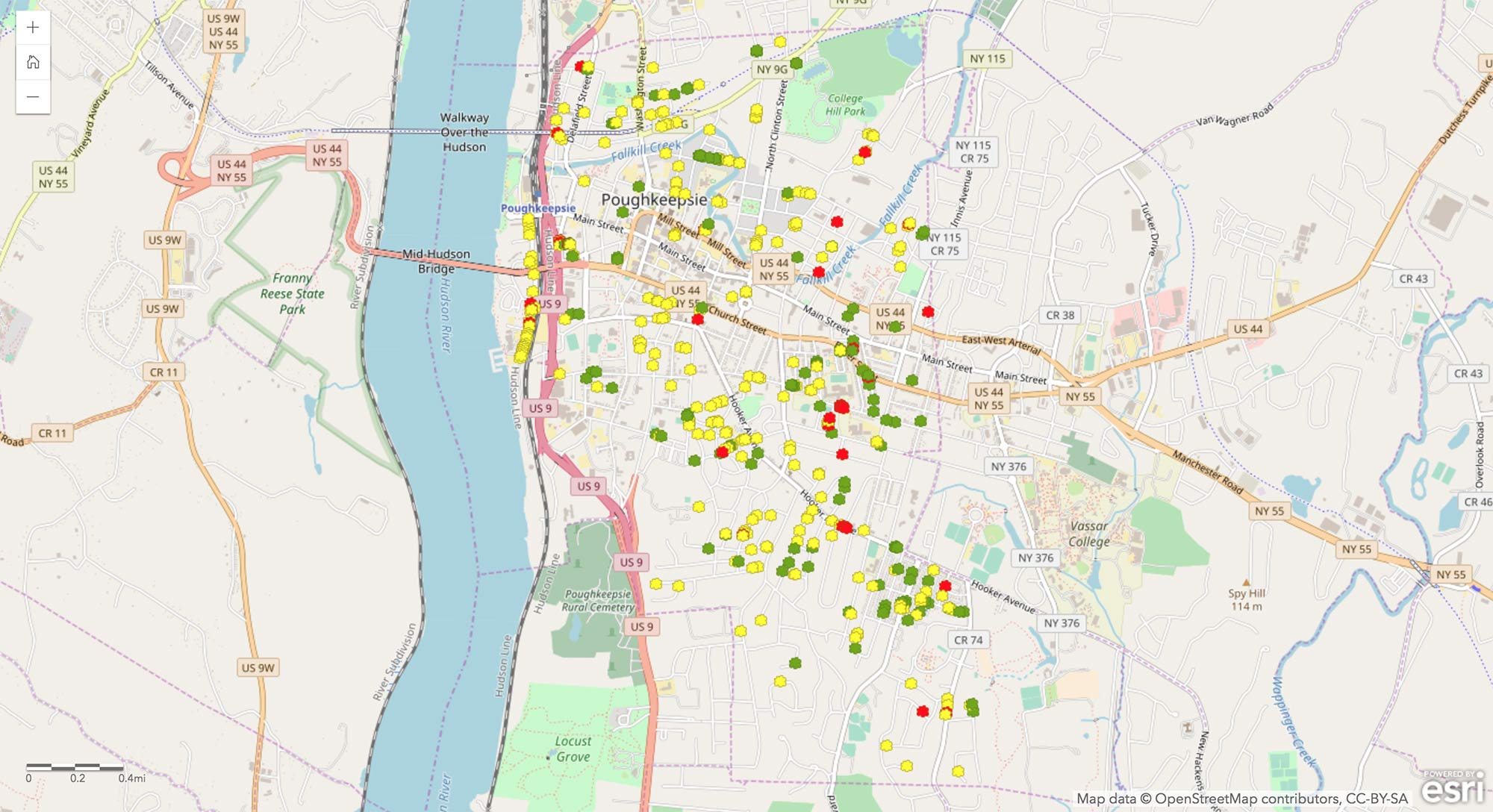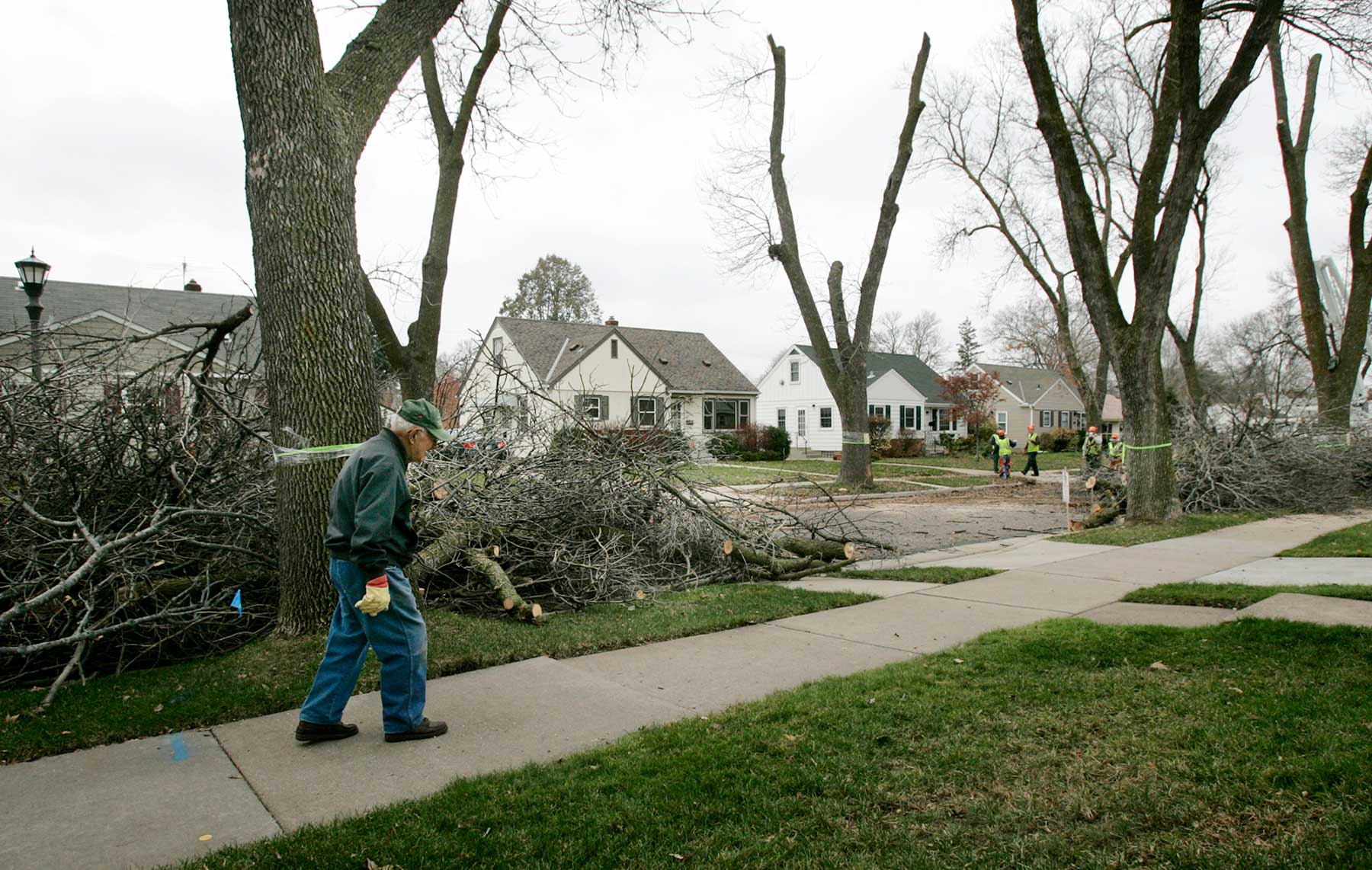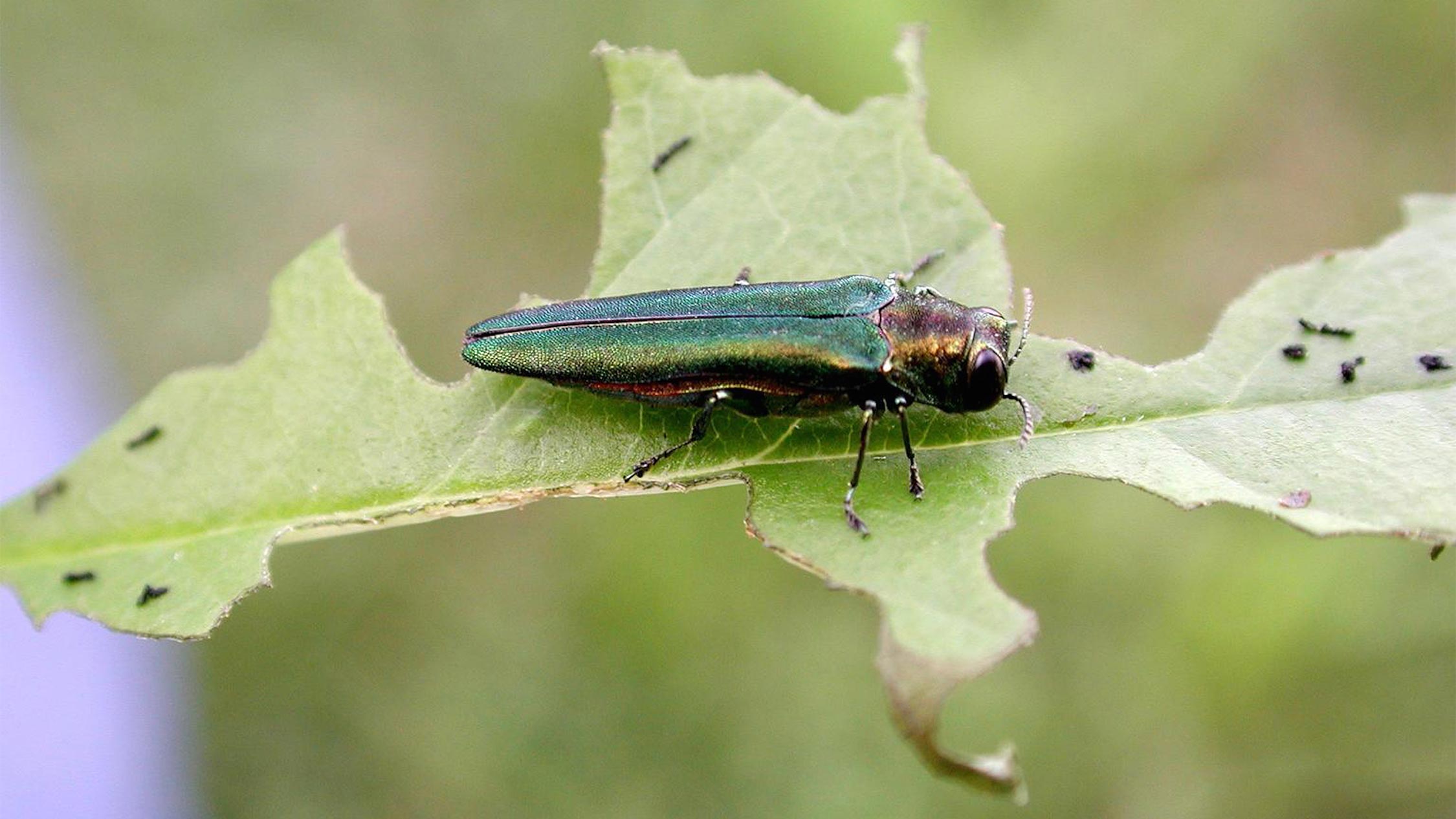Hundreds of millions of voracious beetles about the size of a penny are destroying ash trees all over the country, and they’ve arrived on the Vassar campus and nearby communities. This summer, two Vassar students assessed the damage the tiny emerald ash borer is doing to trees along city streets in Poughkeepsie, and they’re helping city officials make plans for replacing them.

The students, India Futterman ’19 and Elise Chessman ’18, inspected more than 400 ash trees in the city, and they created an interactive map showing the damage or potential damage to each tree. Futterman and Chessman found more than 8 percent of the trees were already infested, and more than half showed other signs that the destructive insects had arrived. “It was gratifying to be able to devise a way to make our findings readily accessible to people who may not be aware of what is happening to these trees,” says Futterman, an earth science major from Brooklyn.
The survey was funded through a portion of a $50,000 grant awarded to the Vassar Environmental Cooperative at the Vassar Barns by the New York State Department of Environmental Conservation through the Hudson River Estuary Program. Jennifer Rubbo, the Cooperative’s program manager, says she was impressed by the quality and scope of the work Futterman and Chessman did. “It was great to see the students take this project and run with it without much micromanaging from me,” Rubbo says. “They provided a valuable service to the community.”

Ash borer infestation began in the Midwest several years ago, and it has slowly spread eastward, killing most ash trees along the way. The ash borer larvae feed on tissues under the bark that transport food and water to the tree, disrupting the flow of nutrients and eventually killing it.
Members of Poughkeepsie’s Shade Tree Commission were aware of the threat and contacted Vassar after learning that Biology Prof. Margaret Ronsheim was developing plans to monitor and mitigate the damage to trees on the Vassar campus. Rubbo says Ronsheim told members of the Commission it would be a good idea to learn how much damage had already been done so they could make timely plans to replace the dying trees.

Ronsheim has been monitoring the Vassar Ecological Preserve for signs of the emerald ash borer since 2012, and the first sightings were confirmed last spring. Since then, Ronsheim says, she has seen additional evidence of damage to ash trees, “with numerous ash trees dying and others showing signs of stress.” She praised Futterman and Chessman for the work they did this summer in Poughkeepsie. “Creating an interactive map allows city residents to find out the status of trees in their neighborhood,” she says. “Their work is extremely timely and will help the city plan how to move forward in removing
The project began last spring when Futterman and two other students used GIS (Geographic Information System) software to devise the interactive map. Futterman credited Neil
Chessman, a geography major from Evergreen CO, joined the team when the spring semester ended. She and Futterman measured the diameter of all 405 ash trees that line the city’s streets, then inspected each tree for damage. Telltale signs of infestation include D-shaped holes on the trunk and branches and S-shaped “tunnels” under the bark where the insect is eating its way through the tree.
Chessman, who plans to pursue a career in urban planning, says working with city officials on a real problem affecting the community was gratifying. “Having the opportunity to observe the inner workings of a municipality was a really valuable learning experience,” she says.
Other Vassar students will be continuing the work Futterman and Chessman started, gathering information on the condition of ash trees in the city’s parks and compiling inventories on other natural resources. “Our students are undertaking a hands-on, long-term project for the city,” Rubbo says. “It’s hard to gain that kind of experience at the undergraduate level.”
Poughkeepsie Mayor Robert Rolison said Futterman and Chessman had provided a significant service to the city. “The partnership we have with Vassar has been a valuable one, and this is another example,” Rolison says. “We were aware of the problem, but we didn’t expect to see the students provide this type of detailed analysis in such a short time. It was a remarkable effort.”
